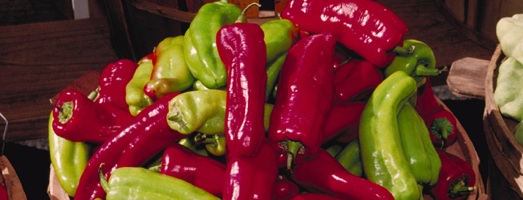 University of Washington ecologist Joshua Tewskbury spends much of his time on a quest for wild chili peppers. Fueled by coca leaves, he is seeking answers to questions about the evolution of the plants, specifically why wild chilis are hot. In central Bolivia, Tewksbury is exploring the natural function of capsaicin, the heat-generating chemical found in the plant. Smithsonian's Brendan Borrell recently went into the forest with him.
University of Washington ecologist Joshua Tewskbury spends much of his time on a quest for wild chili peppers. Fueled by coca leaves, he is seeking answers to questions about the evolution of the plants, specifically why wild chilis are hot. In central Bolivia, Tewksbury is exploring the natural function of capsaicin, the heat-generating chemical found in the plant. Smithsonian's Brendan Borrell recently went into the forest with him.From Smithsonian (Wikimedia Commons photo):
Bolivia is believed to be the chili's motherland, home to dozens of wild species that may be the ancestors of all the world's chili varieties—from the mild bell pepper to the medium jalapeño to the rough-skinned naga jolokia, the hottest pepper ever tested. The heat-generating compound in chilies, capsaicin, has long been known to affect taste buds, nerve cells and nasal membranes (it puts the sting in pepper spray). But its function in wild chili plants has been mysterious.
Which is why Tewksbury and his colleagues have made multiple trips to Bolivia over the past four years. They're most interested in mild chilies, especially those growing near hot ones of the same species—the idea being that a wild chili lacking capsaicin might serve as a kind of exception that proves the rule, betraying the secret purpose of this curiously beloved spice...
"Capsaicin demonstrates the incredible elegance of evolution," says Tewksbury. The specialized chemical deters microbes—humans harness this ability when they use chilies to preserve food—but capsaicin doesn't deter birds from eating chili fruits and spreading seeds. "Once in a while, the complex, often conflicting demands that natural selection places on complex traits results in a truly elegant solution. This is one of those times."

No comments:
Post a Comment